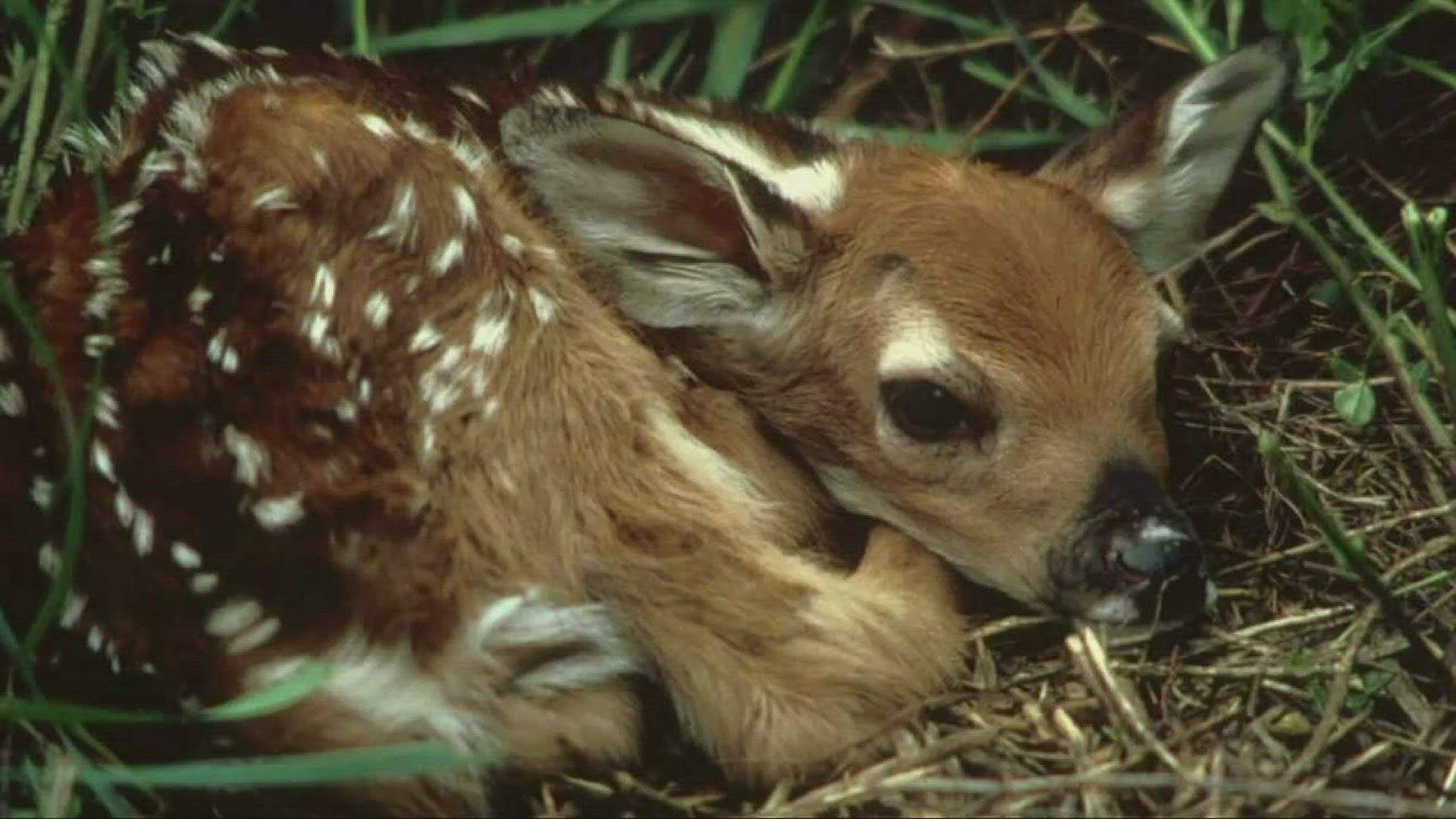Touching a deer can be dangerous for both you and the animal. Deer are wild animals and can carry diseases that can be transmitted to humans, making contact risky.
Deer are majestic creatures that are often seen in our parks and countryside. Although they may seem approachable and friendly, it is never a good idea to touch them. There are several reasons why you should avoid touching deer. Firstly, deer are wild animals and are not used to human interaction. They can become stressed or frightened if approached, which can cause them to lash out. Secondly, deer can carry a range of diseases that can be transmitted to humans, including lyme disease and other tick-borne illnesses. Handling deer can put you at risk of exposure to these diseases. Additionally, deer may also be carrying ticks or other parasites, which can also be harmful to humans. Overall, it is important to remember that deer are wild animals and should be respected and admired from a distance.

Credit: www.wkyc.com
It’s important to understand why you should not touch deer. There are various possible dangers associated with coming into contact with them. This article will highlight the risks of interacting with these animals. Not only could you potentially get injured, but touching deer can also unintentionally harm or even kill them.
Additionally, deer are wild animals and interacting with them can cause them to become habituated to humans, leading to negative consequences for the animal and people alike. Understanding the reasons why you should keep a safe distance from deer will help protect both you and the animal population.
Contents
Understanding Deer Behavior
Deer are stunning creatures usually seen grazing peacefully in parks, on the roadside, or in the wild. However, it’s essential to understand their behavior before attempting to touch them. Deer are naturally skittish and easily frightened by sudden movements or unfamiliar noises.
They are also sensitive to touch and may react aggressively when threatened. Deer may kick, bite, or even ram into a predator or human to protect themselves. It’s important to give them adequate space and leave them alone as much as possible to avoid any negative interaction.
Remember, as much as you want to interact with them, they are ultimately wild animals and should be treated with respect and caution.
Health Risks For Humans
Deer can transmit diseases to humans through direct contact or through handling infected animals. Some of the common diseases that can be contracted from deer include lyme disease, which is transmitted through tick bites, and brucellosis, which is spread through contact with deer feces or infected tissues.
Exposure to deer blood and other bodily fluids can also lead to contracting tuberculosis, q-fever, ehrlichiosis, and chronic wasting disease (cwd). The consequences of exposure to these diseases may vary depending on the type of infection and the individual’s immune system.
It is advisable to avoid touching deer and to wear protective clothing while hunting to reduce the risk of exposure to these diseases.
Legal Consequences
Deer are beautiful creatures that people love to admire, but it’s crucial not to touch them. There are legal consequences in place to protect deer. In many places, it’s against the law to touch a deer, and there are significant penalties for violating these laws.
The laws are in place to safeguard the deer population, which is vital for the ecosystem. Different states and countries may have their own sets of rules and regulations that prohibit certain actions concerning deer. It’s important to be aware of these regulations to avoid violating them.
Poaching and illegal hunting are also punishable offenses that can result in severe monetary penalties or even imprisonment. Anyone who loves the deer should respect the laws that protect them. If you see a deer in the wild, admire it from a safe distance.
Best Practices For Deer Interaction
It’s important to never touch deer when you come across them in the wild. Instead, follow these tips to safely observe and enjoy them without any physical interaction. Firstly, keep your distance and avoid approaching them too closely. Secondly, never offer them food or try to feed them.
Thirdly, avoid sudden movements or loud noises that could startle them. Lastly, if you find yourself too close to a deer, try to slowly back away and avoid eye contact. By following these practices, you can appreciate the beauty of these animals while respecting their space and safety.
Frequently Asked Questions On Why You Should Not Touch Deer?
Why Shouldn’T You Touch A Deer?
Deer are wild animals, and touching them can cause stress, leading to injury or death. They can also carry diseases that can be transmitted to humans, such as lyme disease and leptospirosis.
What Can Happen If You Touch A Baby Deer?
Touching a baby deer can lead to the mother abandoning it. Without the mother, the fawn will eventually die. Additionally, the mother may become aggressive towards humans if they perceive their young to be in danger.
Can You Get Sick From Touching A Deer?
Deer can carry various diseases that can be transmitted to humans through contact with their blood, tissue, or feces. These diseases include lyme disease, chronic wasting disease, and leptospirosis.
What Should You Do If A Deer Approaches You?
If a deer approaches you, it’s best to keep a safe distance and refrain from touching it. Try to calmly and slowly back away to allow the deer to continue with its day-to-day activities.
Conclusion
Avoid touching deer as it can cause harm to both humans and deer. If you do so, you risk getting bitten, kicked, or exposing the deer to diseases. Even baby deer can have their mothers abandon them if they detect human scent on them.
Sharing this knowledge with others can help them stay safe too. Let’s respect these wild animals from a safe distance and leave them alone.

